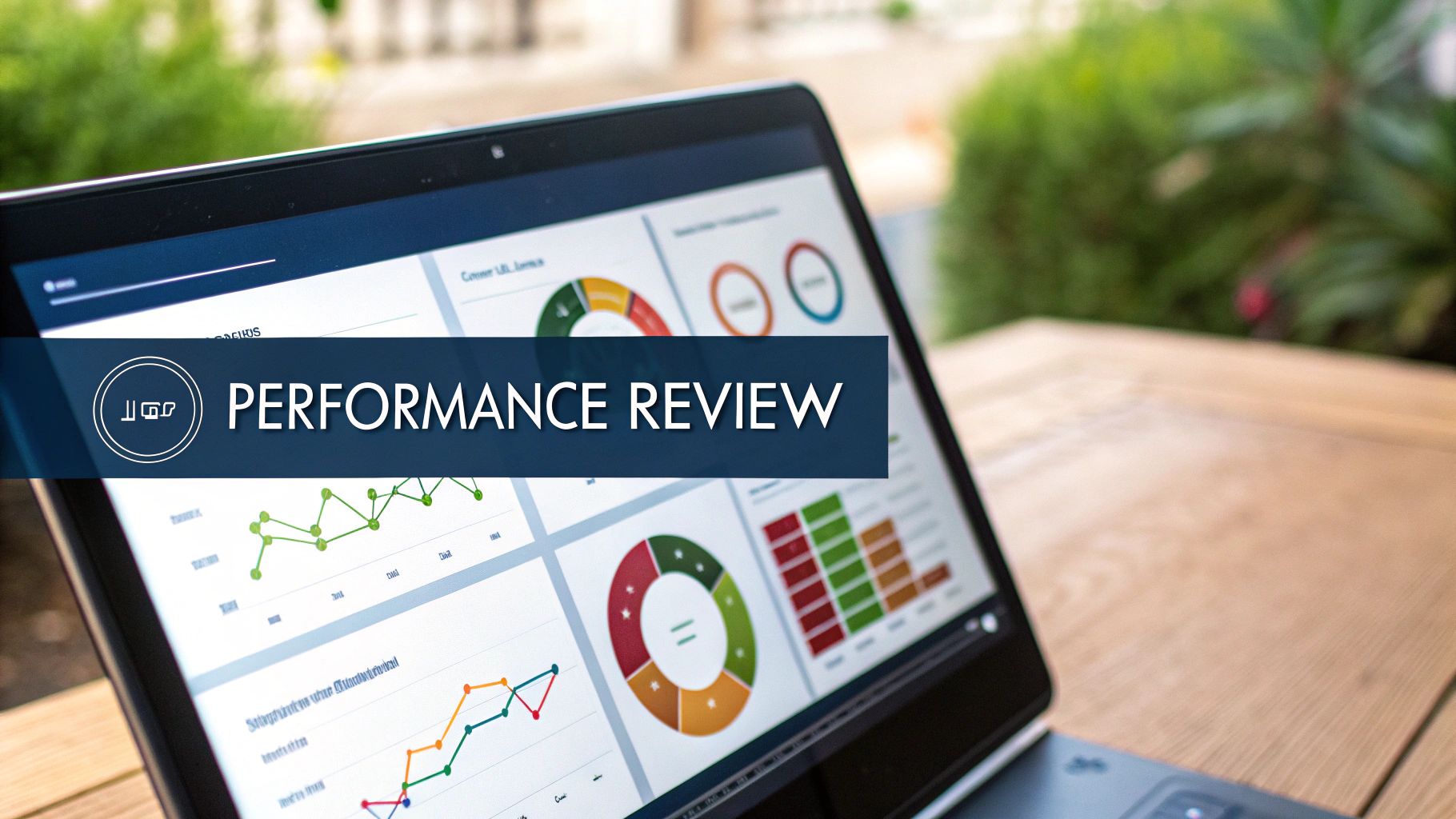The Foundations of Smart Investment Decision Making

Successful investing hinges on a robust investment decision-making process. This process provides a framework for evaluating investment opportunities and mitigating potential risks. It allows investors to make clear-headed decisions aligned with their financial goals, rather than reacting emotionally to market fluctuations.
Key Principles of Effective Investment Decision Making
A solid investment decision-making process incorporates several key principles. These principles, working in concert, provide a comprehensive approach to navigating the market. First, clearly defined goals are paramount. Understanding your why – retirement, a down payment, or something else – shapes every investment choice.
This understanding leads directly to the second principle: honest risk assessment. Knowing your comfort level with potential losses is crucial. A younger investor, for example, might be more comfortable with higher-risk investments than someone nearing retirement.
Diversification, the practice of spreading investments across different asset classes, is also essential. This time-tested strategy helps mitigate risk by avoiding overexposure to any single investment. Finally, ongoing monitoring and evaluation are vital for adapting to ever-changing market conditions and refining your strategy.
Building Your Investment Decision Making Framework
Building your own framework involves a series of steps that form a structured approach to investment analysis. Initially, thorough research is critical. This includes understanding market trends, economic indicators, and the performance of individual companies or assets.
Next, analyze potential investments. This means evaluating financial statements, assessing industry dynamics, and projecting future growth. This step requires careful consideration and critical thinking. Based on your research and analysis, you can then make informed decisions that align with your investment goals and risk tolerance.
Impact investing adds another dimension, considering social and environmental impact alongside financial returns. Investors might use tools like portfolio scatterplots to compare potential investments against existing holdings. This helps them identify opportunities with both strong returns and positive social or environmental benefits. Learn more about impact integration in financial decision-making: Implications for Investment Decision-Making
Finally, regularly review and adjust your portfolio. This iterative process is crucial for adapting to market changes and optimizing your investment strategy over the long term.
To further illustrate these steps, let's take a look at the following table. It provides a breakdown of the process and its importance.
Steps in the Investment Decision Making Process
The following table breaks down the essential stages of the investment decision-making process and their importance.
| Process Step | Key Activities | Importance to Success |
|---|---|---|
| Define Goals | Articulate specific financial objectives. | Provides direction and focus. |
| Assess Risk | Determine your risk tolerance. | Ensures alignment with comfort level. |
| Conduct Research | Analyze market trends and company performance. | Informs investment choices. |
| Analyze Investments | Evaluate potential investment opportunities. | Identifies promising options. |
| Make Decisions | Select investments based on research and goals. | Puts analysis into action. |
| Monitor & Evaluate | Track performance and adjust portfolio accordingly. | Optimizes returns over time. |
By following these steps diligently, you can build a strong foundation for successful investing, minimize emotional biases, and maximize your chances of achieving your financial goals.
How AI Is Shaping Investment Decisions

Artificial intelligence is changing how investors approach decision-making, offering new tools and valuable insights. These tools can analyze massive amounts of data, uncovering potential opportunities often overlooked by traditional methods. This data-driven approach empowers investors with more comprehensive information.
AI-Powered Insights: Finding Hidden Gems
Natural language processing (NLP) helps investors quickly interpret market sentiment. For example, NLP can analyze thousands of news sources in seconds, providing a snapshot of prevailing attitudes toward specific assets or industries. This speed and breadth of analysis gives investors a significant edge.
Machine learning algorithms, a subset of AI, excel at identifying complex patterns and correlations within data. These patterns often go unnoticed by human analysts. By analyzing historical market data, economic indicators, and even social media trends, these algorithms can offer predictions about future market movements.
Predictive analytics, another AI-driven tool, is increasing the accuracy of asset performance forecasts. Using statistical models based on historical and current data, this technology projects the potential future value of investments.
The Evolution of Investment Decisions
The integration of AI has significantly changed the investment decision-making process. As of 2024, investors are using AI to analyze a wider range of data, including non-traditional sources like news articles and regulatory filings.
This allows for deeper insights, empowering investors to make more informed decisions. For example, AI models like BERT) can analyze sentiment in financial news, providing a clearer picture of market sentiment. Learn more: Harnessing the Power of AI. This leads to more data-driven investment choices.
Balancing Human Insight and Artificial Intelligence
Both institutional and individual investors are using AI. Hedge funds, for instance, use AI to execute high-frequency trades, capitalizing on small market inefficiencies. Individual investors, on the other hand, can access AI-powered robo-advisors. These provide personalized portfolio management based on individual financial goals and risk tolerance.
Finding the right balance between human judgment and AI-driven insights is crucial. While AI provides powerful analytical tools, human judgment remains essential. Investors should critically evaluate the output of AI models, considering factors like market context and unforeseen events.
Integrating AI into Your Investment Strategy
Integrating AI into your investment process requires careful planning and execution. Consider these key factors:
- Data Quality: The effectiveness of AI relies on accurate and reliable data. Ensure your sources are trustworthy and complete.
- Model Selection: Choose AI models aligned with your investment strategy and goals. Each model has unique strengths and limitations.
- Human Oversight: Always maintain human oversight of AI-driven recommendations. Avoid blindly following algorithms without critical analysis.
- Continuous Learning: The investment world is constantly changing. Stay updated on AI advancements and adapt your strategies accordingly.
By thoughtfully integrating AI tools into your investment process, you can gain valuable insights and potentially improve your returns. Remember, AI is a tool; its true power lies in its wise application. The future of investing depends on the effective collaboration of human expertise and artificial intelligence.
Decoding The Factors That Drive Investment Success

Successful investing isn't about hunches or chasing trends. It's about understanding the forces that shape investment performance and weaving them into your strategy. This piece explores the key elements that should inform your decisions, regardless of your preferred asset class.
Macroeconomic Indicators: Separating Signal From Noise
A grasp of the overall economic climate is crucial. Key macroeconomic indicators like interest rates, inflation, and GDP growth offer valuable clues. For example, rising interest rates can increase borrowing costs for businesses, impacting profitability and, consequently, your investment returns.
However, not all indicators are created equal. Learning to distinguish true signals from market "noise" is essential for effective investment decisions.
Company Fundamentals: Looking Beyond the Basics
While metrics like earnings per share are helpful, a deeper dive into company fundamentals is necessary. This includes analyzing revenue growth, debt levels, and cash flow.
Understanding the competitive landscape and a company's industry standing is equally important. This comprehensive perspective offers a more nuanced understanding of a company’s potential.
Market Sentiment: The Power of Perception
Even with solid fundamentals and positive economic conditions, market sentiment plays a powerful role. Investor psychology, fueled by fear and greed, can lead to market overreactions or underreactions to news and events.
Recognizing how sentiment can temporarily override hard data is key. Large institutional investors, like mutual funds and pension funds, exert significant influence on market trends. A 2020 EBRD Investor Study highlighted this impact, reinforcing the importance of market awareness.
Tailoring Your Approach: Strategy Matters
The weight of these factors shifts depending on your investment strategy. A value investor, for instance, may prioritize company fundamentals, seeking undervalued opportunities.
A growth investor, on the other hand, might focus on revenue growth and market sentiment, targeting companies with high expansion potential. Income investors may prioritize dividend yields and interest rates. Aligning your strategy with these factors refines your decision-making.
A Practical Framework for Decision Making
A structured approach is key to integrating these factors effectively. Developing a checklist that encompasses macroeconomic analysis, fundamental evaluation, and sentiment assessment can provide consistency.
This checklist can be tailored to various asset classes and investment styles. Continuously refining your process based on market feedback and ongoing learning is crucial for adapting to dynamic market conditions and improving your chances of investment success.
Beyond Returns: Measuring What Matters

Raw returns are important, but they don't tell the whole story of investment success. It's like judging a restaurant solely on portion size, without considering the food quality or service. A truly insightful understanding of your investments requires a more nuanced approach.
We need to consider risk, benchmarks, and appropriate time horizons. This deeper analysis will ultimately refine your investment decisions.
Going Beyond Simple Percentage Gains
Experienced investors know context is key. A 10% return might seem good, but if the market returned 15%, your investment underperformed. This is where benchmarking comes in.
Comparing your returns to a relevant index, such as the S&P 500 for US equities, helps gauge your strategy's effectiveness. It provides a crucial point of reference.
Evaluating investment performance also means looking beyond simple returns. A thorough analysis of risk and benchmarks is essential. Investment performance measurement is critical to the investment decision-making process. It involves analyzing returns relative to benchmarks to assess the value added by investment managers.
Attribution analysis breaks down returns into components like asset allocation, security selection, and market timing. This helps understand where value is created. You can learn more about this crucial process: Learn More About Performance Measurement.
Risk-Adjusted Returns: The True Measure of Skill
Imagine two investments: one returns 12% with high volatility, the other 8% with low volatility. Which is better? The answer depends on your risk tolerance.
This is where risk-adjusted metrics like the Sharpe ratio and Sortino ratio are valuable. These ratios show the return you're getting for each unit of risk taken. A higher ratio generally indicates a more efficient investment.
For example, a portfolio with a higher Sharpe ratio is considered to have generated better risk-adjusted returns. It’s a way to compare apples to apples in the investment world.
Avoiding Common Measurement Pitfalls
Many investors focus on short-term fluctuations. However, different investment strategies have different time horizons. A long-term value investor shouldn't worry about short-term market dips.
Align your performance evaluation with your investment's intended duration. This long-term view is crucial for success.
Another common mistake is ignoring transaction costs. Small fees can significantly impact overall returns over time. Factor these costs into your performance calculations for a more accurate picture.
From Hindsight to Foresight
Analyzing past performance is more than just looking back. It’s a powerful tool for future decisions. By examining what worked and what didn't, you can identify strengths and weaknesses.
Refine your strategies and make better choices moving forward. This continuous learning is vital for long-term investment success. It’s about turning past lessons into future gains.
Building Confidence in Your Investment Decisions
The best investment strategy won't work if emotions get in the way. This section explores the psychological hurdles of investing, examining why we make poor financial choices and how to correct these tendencies. We’ll explore techniques for staying on track during market fluctuations and building resilience in your investment decision-making.
Understanding the Psychology of Investing
Our brains aren't wired for perfect investment decisions. We often fall prey to biases like loss aversion, where the pain of a loss outweighs the joy of an equal gain. This can cause investors to sell prematurely during market dips.
Another common bias is confirmation bias, seeking information that supports existing beliefs while dismissing contradictory evidence. This can strengthen bad investment habits and hinder adaptation to changing market conditions. Conquering these biases is essential for effective investment decisions.
Confidence also plays a significant role. A 2022 Statista survey found that less than a third of beginner investors felt confident in their decision-making. This highlights the need for financial education and sound advice.
Developing Discipline and Resilience
Staying disciplined during market turmoil requires a solid plan. Predetermined decision rules, such as set buy and sell points, can prevent impulsive reactions based on fear or greed. This helps maintain a rational approach.
Focus on the quality of your decisions, not just the results. Well-informed decisions can still lead to losses due to unforeseen market events. Conversely, luck can create false confidence.
Resilience means viewing mistakes as opportunities. Analyze past errors objectively to understand what happened and how to improve future decisions. This turns setbacks into valuable lessons.
Practical Techniques for Building Confidence
Here are some practical steps for strengthening your investment confidence:
- Educate Yourself: Continuously learn through books, podcasts, and reputable online resources.
- Seek Professional Advice: A financial advisor can provide tailored guidance.
- Develop a Written Investment Plan: Document your goals, risk tolerance, and investment strategy.
- Backtest Your Strategy: Use historical data to evaluate its potential effectiveness.
- Start Small and Gradually Increase Investments: Gain experience and comfort before committing large sums.
- Practice Patience and Discipline: Investing is a long-term endeavor. Avoid chasing quick wins and focus on long-term objectives.
By using these strategies and emphasizing a well-defined investment process, you can navigate the psychological aspects of investing and build strong confidence in your choices, increasing your chances of long-term success.
Your Personal Investment Decision-Making Blueprint
This section offers a practical, step-by-step guide to creating your own investment decision-making process. We'll explore adaptable templates and checklists used by professionals, regardless of your experience level. This isn't about theoretical perfection; it's about building a practical, real-world system.
Defining Your Investment Goals and Risk Tolerance
The first step is identifying your investment goals. Are you saving for retirement? A down payment on a house? Perhaps early financial independence? Clearly defined objectives give your investments purpose and direction.
Next, honestly assess your risk tolerance. How much potential loss are you comfortable with? This is a critical self-assessment. A younger investor with more time might accept higher risk than someone closer to retirement. Knowing your risk profile is essential for making suitable investment choices.
Research and Analysis: Building a Solid Foundation
Once you’ve established your goals and risk tolerance, research is key. This involves understanding market trends, current economic indicators, and the performance of specific assets or companies you are considering.
Carefully analyze potential investments. Evaluate financial data, industry dynamics, and future growth projections. Critical thinking is crucial. A company with a strong past performance might face future challenges due to new competitors or shifting market conditions.
Making Informed Decisions and Monitoring Performance
Base your investment decisions on your research, aligning them with your goals and risk tolerance. Document your decisions to understand your rationale and have a record for future review.
Markets constantly change. Regularly monitor your portfolio and adjust it based on market fluctuations and the performance of your holdings. This ongoing process is vital for long-term success. For example, if a specific sector consistently underperforms, rebalancing your portfolio can help mitigate risk.
Structuring Your Process: Frameworks and Checklists
Professional investors often employ structured frameworks to guide their decision-making. A common approach is a checklist encompassing macroeconomic analysis, company-specific research, and risk assessment. This ensures thorough consideration of all critical factors.
Another helpful framework focuses on comparing potential new investments against current holdings. This relative perspective helps uncover opportunities with potentially better risk-return profiles.
To better illustrate the differences, let’s examine a comparison table:
Investment Decision Making Framework Comparison: This table compares different approaches to structuring the investment decision making process.
| Framework Type | Best For | Key Strengths | Potential Limitations |
|---|---|---|---|
| Checklist | All investors | Ensures consistent evaluation of key factors | Can become inflexible without regular updates |
| Relative Comparison | Portfolio management, identifying new assets | Highlights relative value and risk | Needs detailed data on existing holdings |
As we can see, each framework offers unique benefits and drawbacks. Choosing the right one depends on your individual investment style and the complexity of your portfolio.
Documentation and Review: Continuous Improvement
Documenting your investment choices isn’t simply record-keeping; it’s a powerful tool for self-reflection and improvement. Reviewing past decisions, both successful and unsuccessful, helps you identify patterns, refine your process, and learn from your mistakes. This transforms hindsight into foresight. Even a simple spreadsheet or journal is surprisingly effective for tracking investments and documenting the rationale behind each decision.
Regular, systematic review is vital. Ask yourself these questions: What strategies worked? What didn't? What could I have done differently? Honest self-assessment, combined with continuous learning, shifts your approach from reactive to proactive. This process equips you with a clear roadmap, transforming your investment decision-making from scattered to disciplined and effective.

